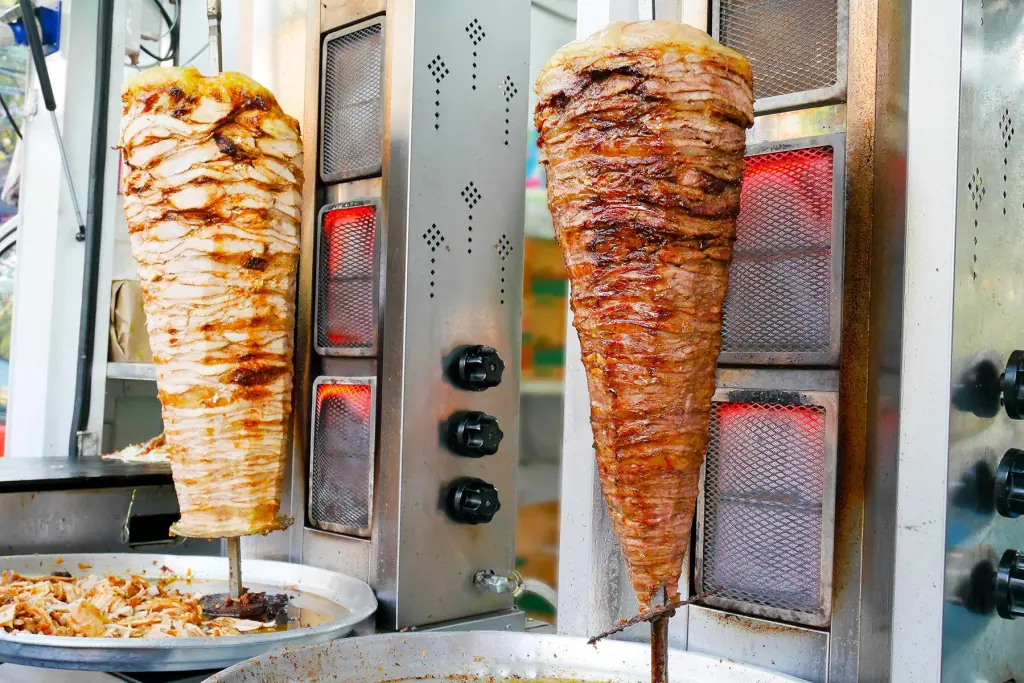The Origin of Shawarma in Nigeria: A Fusion of Flavors

Shawarma, the succulent Middle Eastern dish known for its spiced meat and aromatic flavors, has found a special place in Nigerian cuisine. This delicious street food has a rich history that stretches from the Middle East to the bustling streets of Nigeria. Here’s a closer look at how shawarma made its way to Nigeria and became a culinary favorite.
The Origins of Shawarma
Shawarma’s roots can be traced back to the Ottoman Empire (modern-day Turkey) in the 19th century. The dish features marinated meat, typically beef, lamb, or chicken, which is cooked on a vertical rotisserie. Shawarma is seasoned with a blend of spices, giving it a distinct flavor profile that includes elements like cumin, coriander, and paprika. The meat is then sliced thin and often served in pita bread or flatbread with vegetables and sauces.
Arrival in Nigeria
**1. *Introduction Through Middle Eastern Influence*
Shawarma was introduced to Nigeria in the late 20th to early 21st centuries, driven by the increasing presence of Middle Eastern immigrants and expatriates. As globalization and cultural exchange flourished, Nigerian cities like Lagos, Abuja, and Port Harcourt began to see the emergence of shawarma vendors and restaurants.
**2. *Adaptation to Local Tastes*
As shawarma established itself in Nigeria, it underwent several adaptations to cater to local preferences and culinary traditions:
- Spice Blends: While traditional shawarma uses a specific set of spices, Nigerian versions often incorporate local spices and seasoning blends. This fusion results in a unique flavor profile that blends Middle Eastern spices with Nigerian tastes.
- Accompaniments: Nigerian shawarma is often served with additional ingredients such as spicy pepper sauce, fried plantains, or jollof rice. These local additions enhance the dish’s flavor and make it more appealing to Nigerian palates.
- Meat Variations: Traditional shawarma commonly uses lamb or beef, but Nigerian shawarma includes chicken and other variations to meet local preferences and dietary habits.
**3. *Integration into Nigerian Cuisine*
Shawarma quickly became popular across Nigeria, blending seamlessly into the country’s diverse food scene. Its accessibility, flavorful taste, and convenient format contributed to its widespread appeal. Shawarma stalls and restaurants began popping up in urban centers, making it a go-to option for many Nigerians looking for a satisfying meal.
Shawarma’s Popularity in Nigeria
**1. *Street Food Culture*
Shawarma has become a beloved part of Nigeria’s street food culture. Vendors often set up stalls or food trucks in busy areas, offering freshly made shawarma that attracts locals and visitors alike. The dish’s popularity as street food underscores its appeal as a flavorful and quick meal option.
**2. *Restaurant and Fast Food Menus*
In addition to street vendors, shawarma has become a staple on restaurant and fast food menus across Nigeria. Many eateries feature shawarma as part of their offerings, allowing customers to enjoy the dish in a more formal dining setting.
**3. *Culinary Innovation*
Nigerian chefs and food enthusiasts have embraced shawarma and made it their own by experimenting with new recipes and presentations. This culinary innovation has led to the creation of unique shawarma variations that reflect Nigeria’s diverse food culture, including vegetarian options and creative flavor combinations.
Conclusion
The journey of shawarma from the Middle East to Nigeria is a story of cultural exchange and adaptation. What began as a traditional Middle Eastern dish has been embraced and transformed by Nigerian chefs and food lovers. Today, shawarma is not just a popular street food but a cherished part of Nigeria’s vibrant culinary landscape. Its success in Nigeria highlights how global cuisines can be adapted and integrated into local cultures, creating new and exciting flavors for everyone to enjoy.






